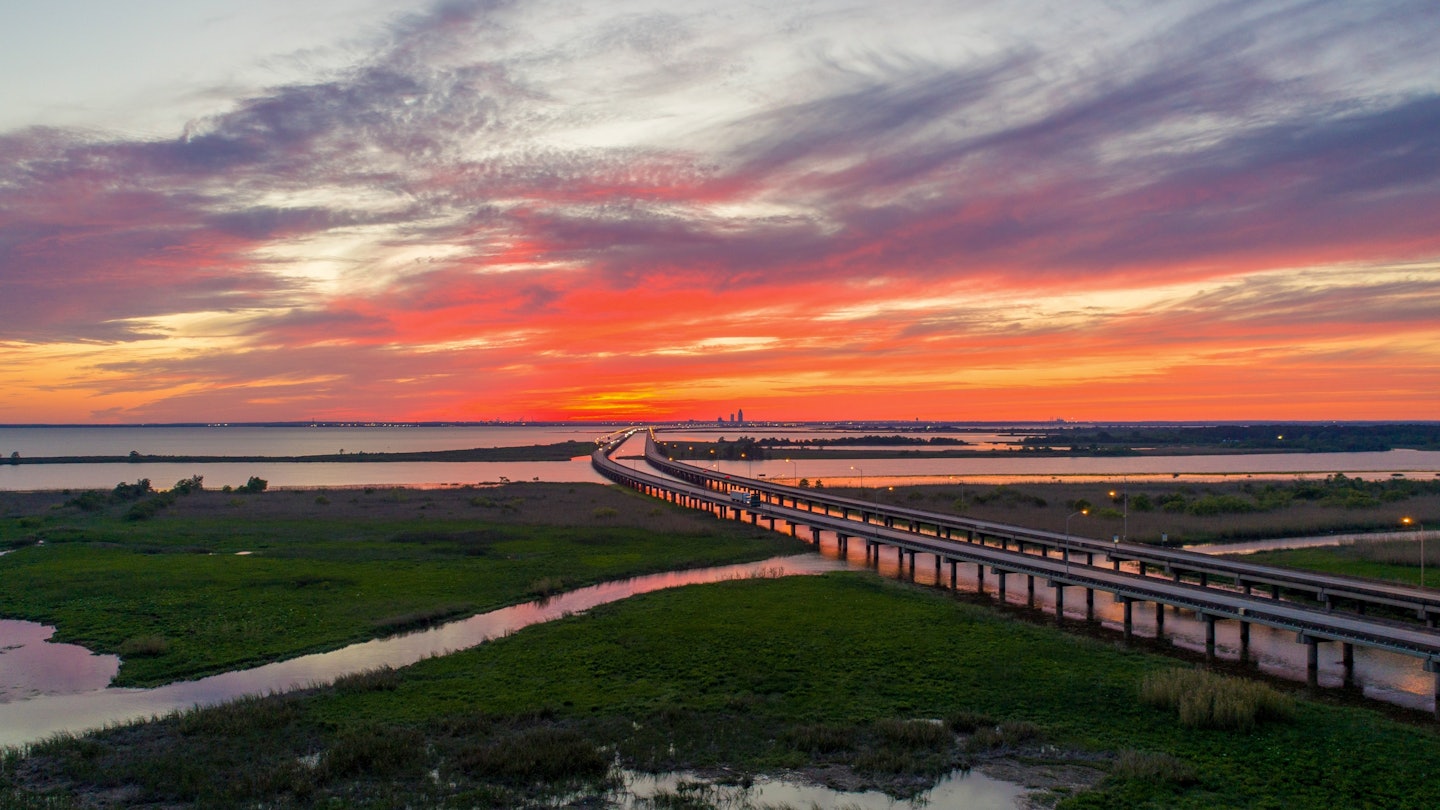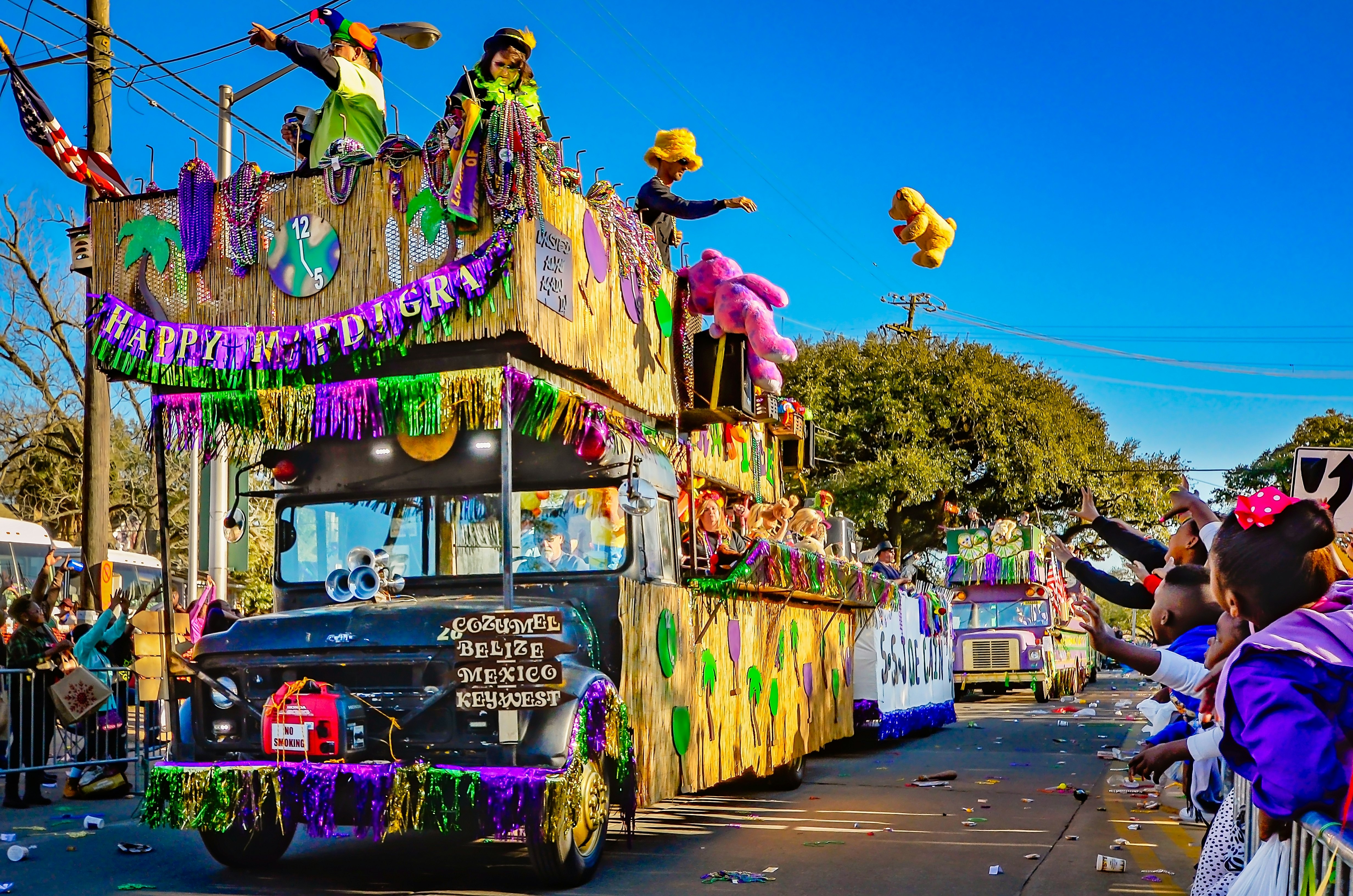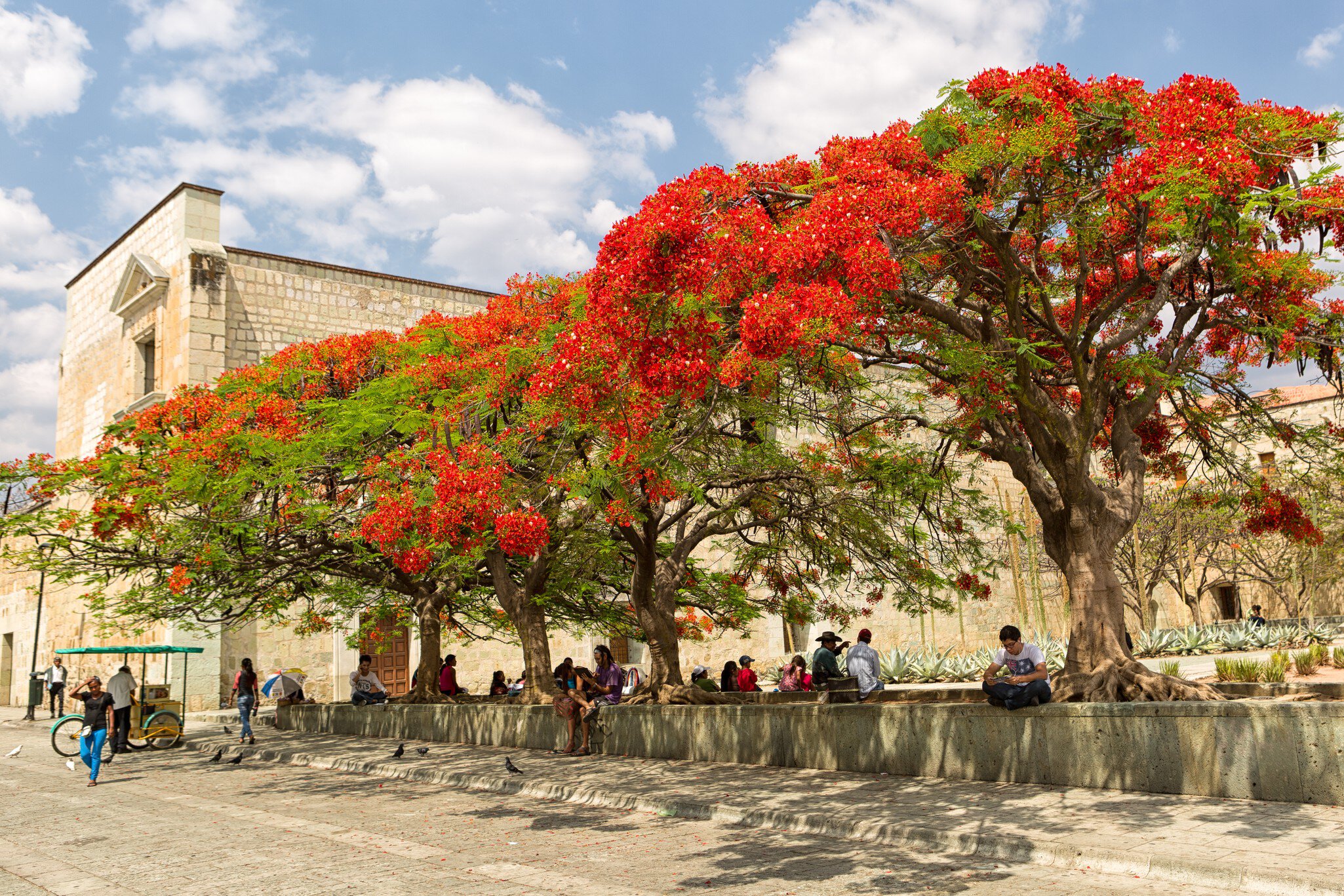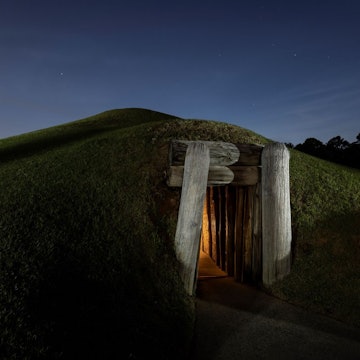

Mobile Bay. Cavan-Images/Shutterstock
A pioneering port city that’s older than the state of Alabama itself, Mobile’s bayside location, straddling snaking wetlands and breezy bayous, brings some unique activities. But there’s plenty of cultural cache here, too, from art-splashed streets and a top-tapping music scene to military heritage and sublime seafood.
Alabama’s fourth-largest city always brings a friendly welcome, and its compact center is easy to navigate. Here’s a look at the best things to do in the Port City.

1. Soak up Mobile’s Mardi Gras celebrations
Though New Orleans is its glamorous epicenter these days, Mardi Gras was first celebrated in Mobile in 1703, and the city still parades every February. In fact, traditions like the colorful parades, floats and masked balls all began in Mobile.
Learn more about these quirky traditions at the Mobile Carnival Museum, where the festival’s 300-year history is detailed, and there’s ample opportunity to try on a few ostentatious hats and beads. But obviously, nothing compares to attending the Mardi Gras itself.
Planning tip: Unsurprisingly, things get busy for Mobile’s biggest event, so it’s wise to book transport and accommodation well ahead of time.
2. Sample some of America’s finest oysters
No trip to Alabama’s Gulf coast is complete without shucking fresh oysters, and there are plenty of places in and around Mobile where you can get stuck in. Though keep in mind you might see some surprising menu options that flame-grill and then drizzle the oysters in melted cheese. It’s just how they do things down here.
Head to local institution for oysters in Mobile, while there are several lively spots dotted along the US 98 Causeway arcing across Mobile Bay, including , , and .
Local tip: For a true non-oyster taste of Mobile, order a West Indies Salad at . Created in 1947, the dish is a fresh mélange of blue crab meat, chopped onion, spices, cider vinegar and oil served chilled on a bed of crisp iceberg lettuce.

3. Zip among alligators on an airboat
Speaking of the US 98 Causeway, a short drive across this bridge over Mobile Bay ushers in a land of lazy river deltas sometimes referred to as "America's Amazon." The most northerly tip of Mobile Bay is home to the Five Rivers Delta, a languid collection of bayous where Airboat Express leads excursions on their airboats between February and November from their base in Spanish Fort.
Terns wheel above and pretty flora like cahaba lily and water primrose pass by, but it’s the presence of the local alligators that is most compelling, especially when they’re sitting motionless, with only their eyes and snout poking above the water’s surface. Captain Geoff Woodliff’s one-hour Eco Tour is best for learning about the area’s biodiversity, but if you just want to feel the thrill and zip of the airboats, then their breezy half-hour Fun Run is the one for you.
Planning tip: Apply plenty of sunscreen before climbing aboard, as once you’re on the water, there’s no escaping the relentless southern sun on your skin.

4. Explore an iconic battleship
As a port city since the 18th century, it’s no surprise that there’s some serious maritime heritage here. And Mobile’s immediate water’s edge is dominated by the imposing sight of the USS Alabama.
A veteran battleship of World War II that saw action in both the North Atlantic and Pacific theaters (including the Battle of Okinawa), it’s been a floating museum since 1964. Exploring its 12 decks – including the crew’s quarters, engine rooms and gun turrets – is a fascinating window into how a working battleship once operated.
Detour: The USS Alabama is part of the wider , which also houses the submarine USS Drum alongside an aircraft pavilion. The pavilion is scattered with airplanes used in several 20th-century wars.

5. Follow art from the street to the corridors
Art comes in all forms in Mobile, and it begins most viscerally at street level. Grabbing a photo with artist Sarah Bexley’s Welcome to Mobile mural at 714 Dauphin St is a rite of passage, but then you can follow the to see more of the city’s most creative expressions.
Around seven miles west of downtown (a 15-minute drive), the is southern Alabama’s only accredited art museum and houses a collection covering more than 6400 works, including paintings, sculptures, decorative arts and crafts. If fine art is your thing, this is the spot to hit.
Planning tip: There’s an available online, making it easier to explore Mobile’s public art as you go.
6. Watch wild birds
Alabama is one of the most biodiverse states in the US, and a 40-minute drive south of Mobile to Dauphin Island makes for one of the state’s most nature-filled day trips.
Of America’s 1000 bird species, 450 either live or pass through Alabama, and the island’s serene woodlands are perfect for catching a glimpse of some amazing bird species. Drop by Audubon Bird Sanctuary and keep an eye out for sandpipers, warblers, wrens, turnstones and herons. Red knots and piping plovers both have threatened status, so it’s a rare treat if you’re able to spot them.
Detour: If you have the time for some history, jump on the ferry over to Fort Morgan. The early 19th-century bastion fort at Mobile Point was built to strengthen US seacoast defenses and can be explored for free.

7. Feel the rhythm of a lively music scene
The South is drenched in music, and you won’t get far without hearing the sound of a guitar or drums echoing through barroom walls. And it’s no different in Mobile.
This city loves smaller, intimate spaces, and spots like the and the fill their rooms with a vigorous mix of jazz, blues and folk. Dauphin St is no stranger to good times, so look out for shows at the likes of and , while further out of downtown, the on Halls Mill Rd throbs to live blues jams seven days a week.
Planning tip: The genre-hopping, free-to-enter brings hip-hop, country, bluegrass, rock and funk to Cathedral Square every July. It’s a wonderful weekend to plan your trip around if making a summer visit to Mobile.
8. Learn about a dark and important side of Mobile’s past
Mobile has a complex and multicultural history, with French, Spanish, British and Caribbean influences forming its identity, and the historic threads which make the modern city are all expertly pulled together at the Italianate .
Arguably, the most important story is told in the Africatown neighborhood. The award-winning is a commemoration of America’s last slave ship (the Clotilda), and this moving exhibition tells the story of the people aboard and the wider story of the African-American community in Mobile today.
Detour: Once you’ve finished at the museum, take a stroll to the likes of the and Africatown Graveyard, which also honor those who crossed on that famous boat.

9. Watch the sun go down on the Gulf
Mobile is on the water, but it isn’t on the coast. However, it’s still a Gulf city, and since the coast is just an hour away, it’s worth the drive to see another of the area’s natural delights. With its snaking trails and tranquil lakes across 6000 acres, Gulf State Park is a fascinating stroll, though it’s on the coast where the fun really begins.
Whether it’s fishing on Gulf State Park Pier, learning how to build professional sandcastles with , letting your hair down to live southern rock at or simply kicking back and watching the blood-orange sun dip below the sea, the Gulf is an escape for the senses.
Planning tip: Try to visit in the shoulder seasons (April to May or September to October) for the best combination of pleasant weather and smaller crowds
10. Meander through a lush neighborhood
While Mobile’s buzzy downtown is a sensory pleasure, sometimes it’s good to relax a little. Oakleigh Garden Historic District’s elegant Victorian homes, quiet shaded streets and charming miniature parks seem to capture an almost imaginary, romantic America.
And amid the sun-dappled oak and magnolia trees lies , where visitors can witness the opulence in which Mobile’s well-heeled classes once lived. Completed in 1833, it’s where cotton broker James W. Roper resided and was built in the Greek revival architecture style, which was popular at the time.
Detour: If you fancy a drink afterwards, make the short walk to . An Oakleigh fixture, it’s been a gregarious Guinness-soaked haunt since 1946.

Plan with a local












